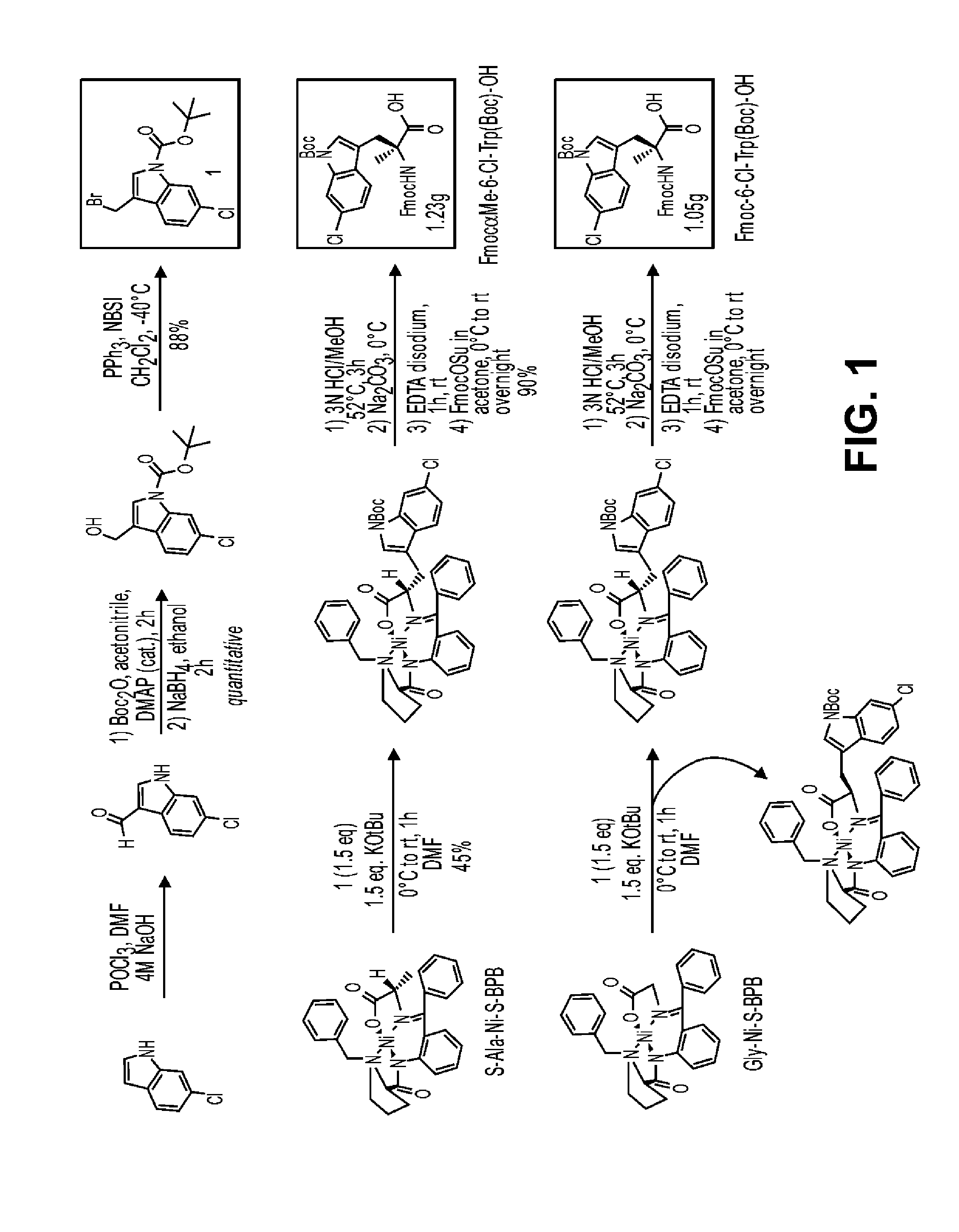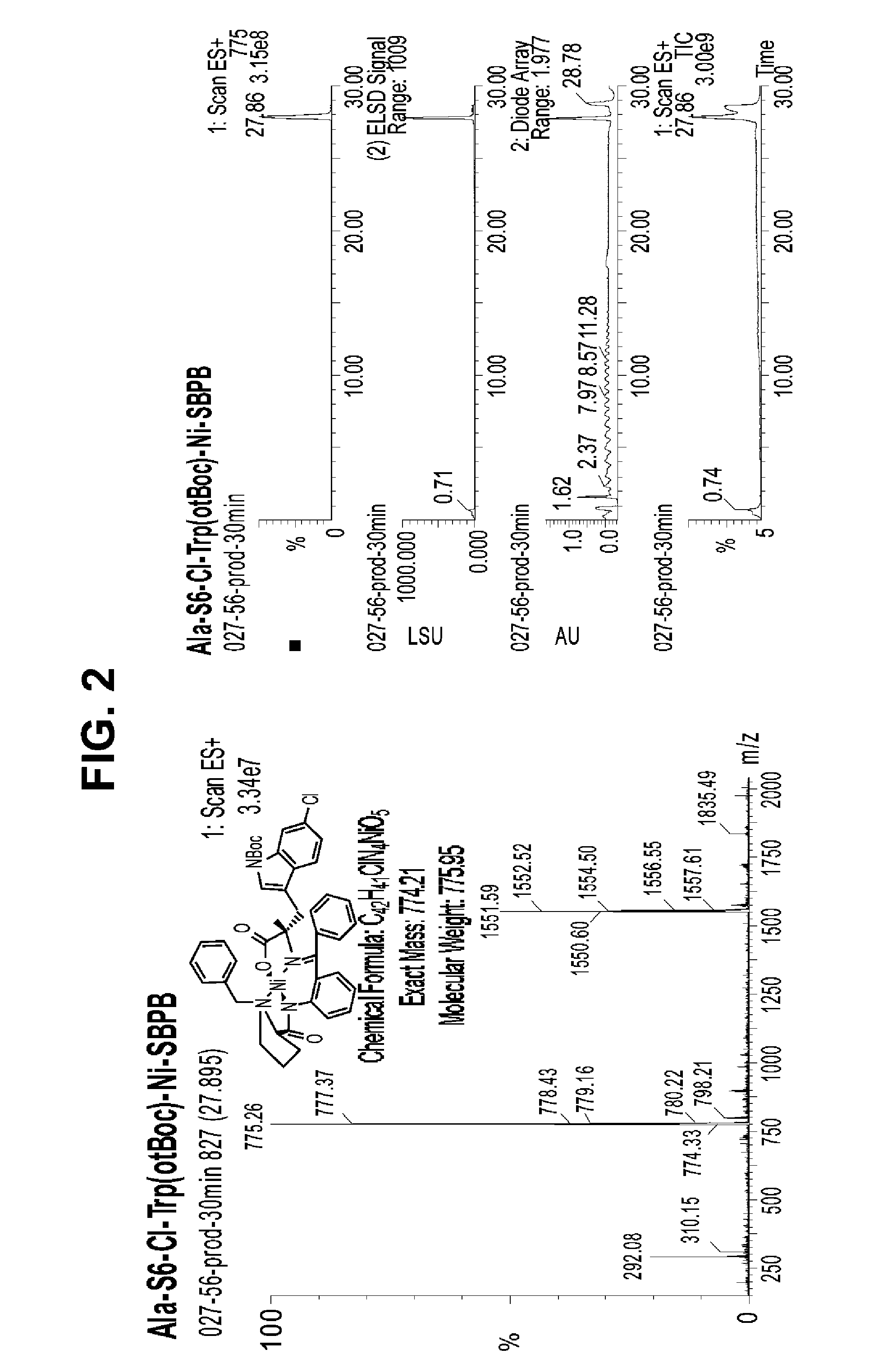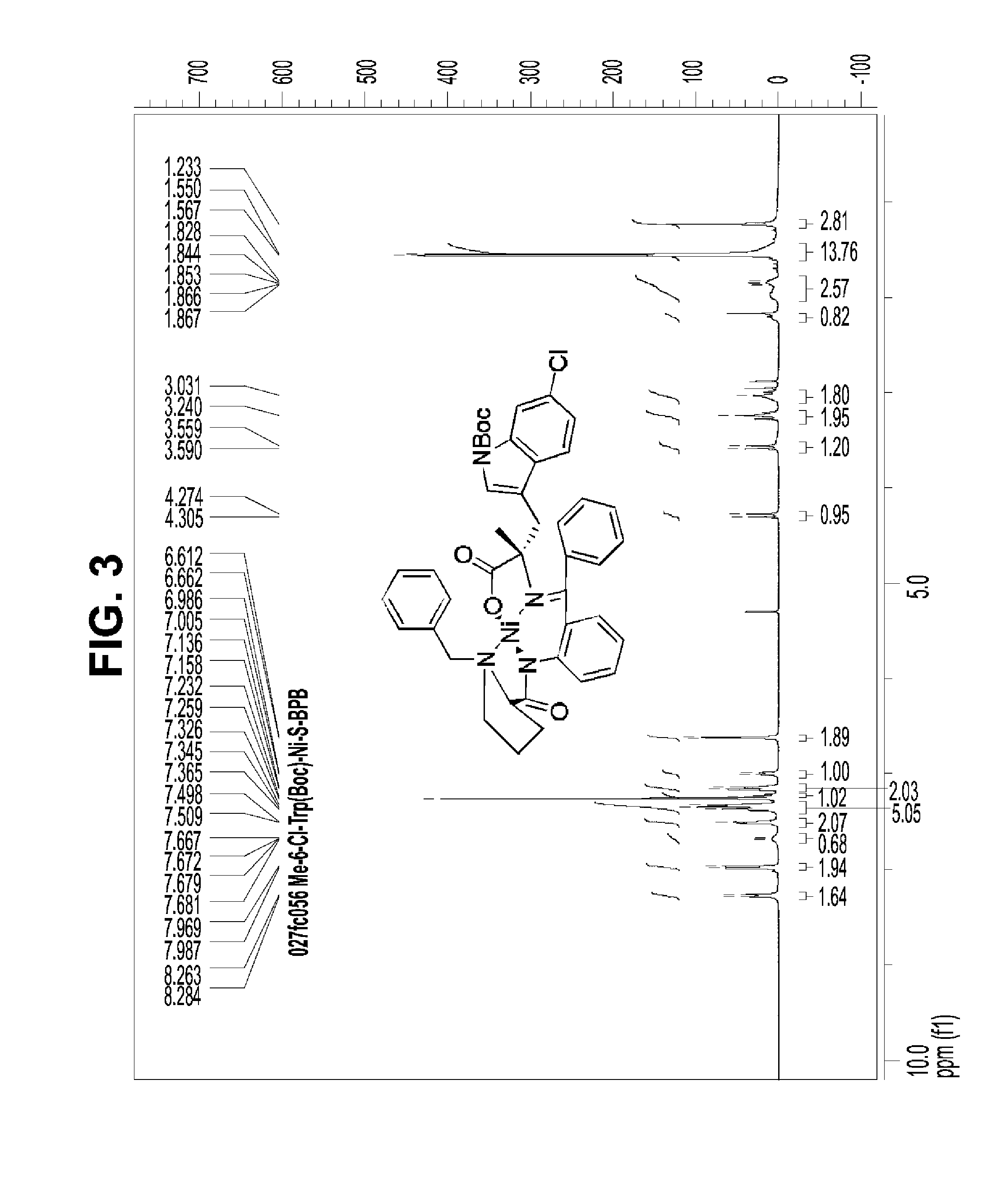Peptidomimetic macrocycles
a macrocycle and peptide technology, applied in the field of peptidomimetic macrocycles, can solve the problems of p53 expression and p53 expression vulnerability of tumors, and achieve the effects of stabilizing the alpha-helical secondary structure, inhibiting its destruction, and improving biological activity
- Summary
- Abstract
- Description
- Claims
- Application Information
AI Technical Summary
Benefits of technology
Problems solved by technology
Method used
Image
Examples
example 1
Synthesis of 6-chlorotryptophan Fmoc Amino Acids
[0206]
[0207]Tert-butyl 6-chloro-3-formyl-1H-indole-1-carboxylate, 1. To a stirred solution of dry DMF (12 mL) was added dropwise POCl3 (3.92 mL, 43 mmol, 1.3 equiv) at 0° C. under Argon. The solution was stirred at the same temperature for 20 min before a solution of 6-chloroindole (5.0 g, 33 mmol, 1 eq.) in dry DMF (30 mL) was added dropwise. The resulting mixture was allowed to warm to room temperature and stirred for an additional 2.5 h. Water (50 mL) was added and the solution was neutralized with 4M aqueous NaOH (pH ˜8). The resulting solid was filtered off, washed with water and dried under vacuum. This material was directly used in the next step without additional purification. To a stirred solution of the crude formyl indole (33 mmol, 1 eq.) in THF (150 mL) was added successively Boc2O (7.91 g, 36.3 mmol, 1.1 equiv) and DMAP (0.4 g, 3.3 mmol, 0.1 equiv) at room temperature under N2. The resulting mixture was stirred at room tem...
example 2
Peptidomimetic Macrocycles of the Invention
[0214]Peptidomimetic macrocycles were synthesized, purified and analyzed as previously described and as described below (Schafmeister et al., J. Am. Chem. Soc. 122:5891-5892 (2000); Schafmeister & Verdine, J. Am. Chem. Soc. 122:5891 (2005); Walensky et al., Science 305:1466-1470 (2004); and U.S. Pat. No. 7,192,713). Peptidomimetic macrocycles were designed by replacing two or more naturally occurring amino acids with the corresponding synthetic amino acids. Substitutions were made at i and i+4, and i and i+7 positions. Peptide synthesis was performed either manually or on an automated peptide synthesizer (Applied Biosystems, model 433A), using solid phase conditions, rink amide AM resin (Novabiochem), and Fmoc main-chain protecting group chemistry. For the coupling of natural Fmoc-protected amino acids (Novabiochem), 10 equivalents of amino acid and a 1:1:2 molar ratio of coupling reagents HBTU / HOBt (Novabiochem) / DIEA were employed. Non-nat...
example 3
Competition Binding ELISA (HDM2 & HDMX)
[0220]p53-His6 protein (30 nM / well) is coated overnight at room temperature in the wells of a 96-well Immulon plates. On the day of the experiment, plates are washed with 1×PBS-Tween 20 (0.05%) using an automated ELISA plate washer, blocked with ELISA Micro well Blocking for 30 minutes at room temperature; excess blocking agent is washed off by washing plates with 1×PBS-Tween 20 (0.05%). Peptides are diluted from 10 mM DMSO stocks to 500 μM working stocks in sterile water, further dilutions made in 0.5% DMSO to keep the concentration of DMSO constant across the samples. The peptides are added to wells at 2× desired concentrations in 50 μl volumes, followed by addition of diluted GST-HDM2 or GST-HMDX protein (final concentration: 10 nM). Samples are incubated at room temperature for 2 h, plates are washed with PBS-Tween 20 (0.05%) prior to adding 100 μl of HRP-conjugated anti-GST antibody [Hypromatrix, INC] diluted to 0.5 μg / ml in HRP-stabilizin...
PUM
| Property | Measurement | Unit |
|---|---|---|
| temperature | aaaaa | aaaaa |
| Tm | aaaaa | aaaaa |
| temperature | aaaaa | aaaaa |
Abstract
Description
Claims
Application Information
 Login to View More
Login to View More - R&D
- Intellectual Property
- Life Sciences
- Materials
- Tech Scout
- Unparalleled Data Quality
- Higher Quality Content
- 60% Fewer Hallucinations
Browse by: Latest US Patents, China's latest patents, Technical Efficacy Thesaurus, Application Domain, Technology Topic, Popular Technical Reports.
© 2025 PatSnap. All rights reserved.Legal|Privacy policy|Modern Slavery Act Transparency Statement|Sitemap|About US| Contact US: help@patsnap.com



